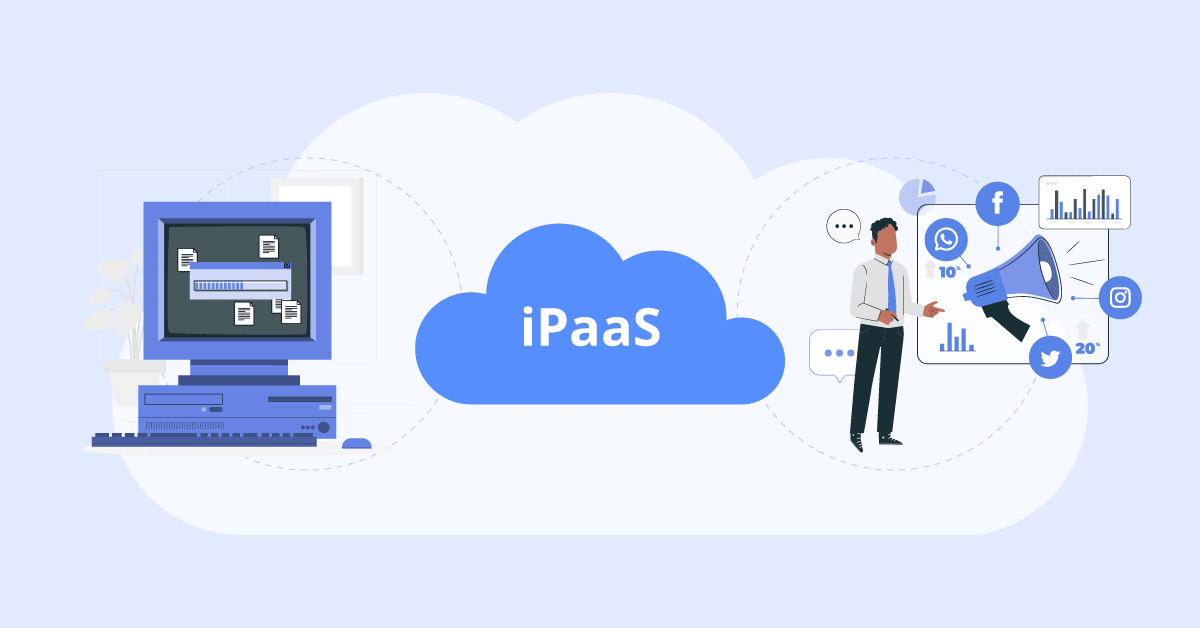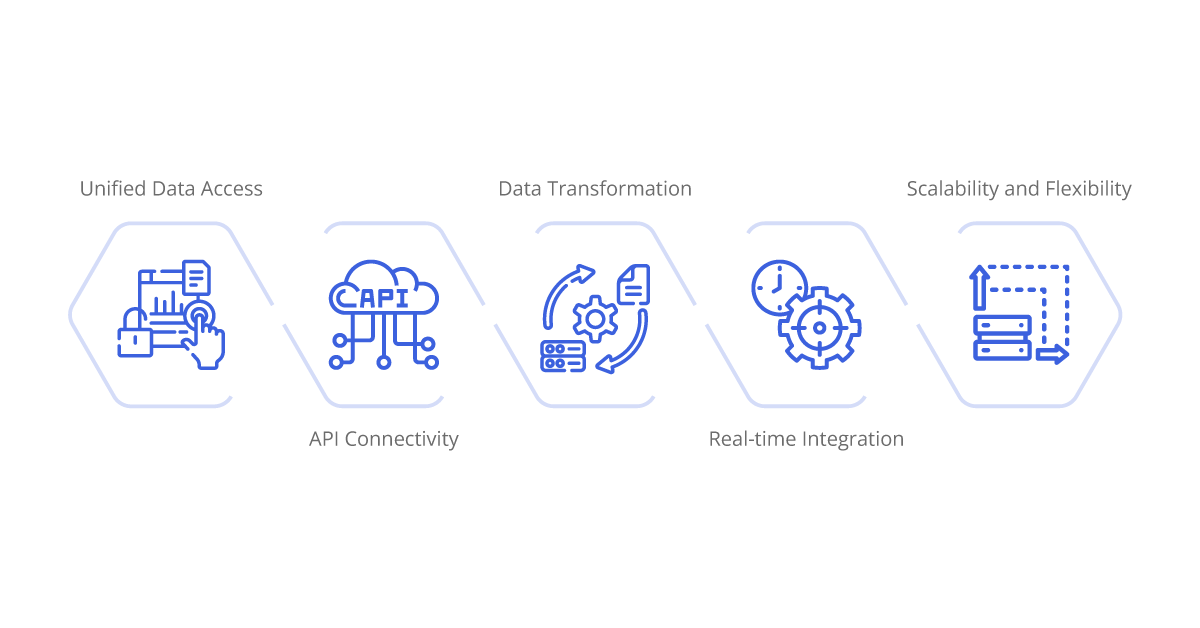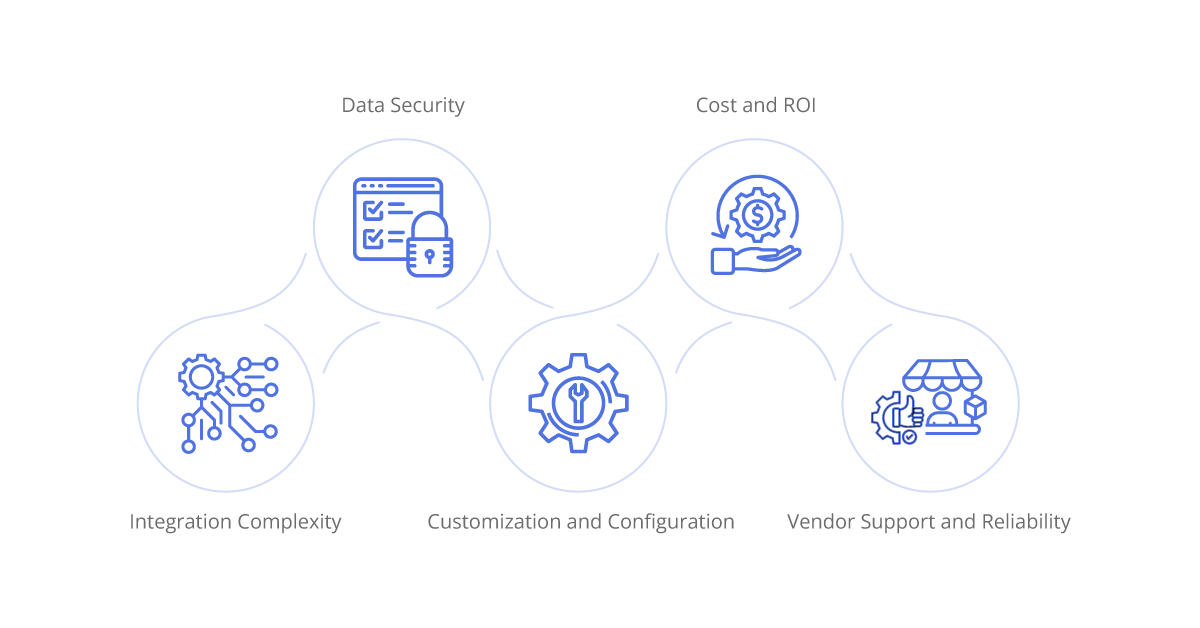Modern marketing relies heavily on digital tools and platforms to reach and engage with customers effectively. However, many companies still grapple with the challenge of integrating their legacy systems with these new technologies. This is where Integration Platform as a Service (iPaaS) comes into play. In this comprehensive guide, we’ll delve into the key considerations for using iPaaS to integrate legacy systems in marketing.
Aonflow iPaaS – Free for First 3 Months!
Build and run up to 1,500 transactions monthly with no cost. No payment info needed!
Understanding Legacy Systems
Before we dive into iPaaS considerations, let’s first understand what we mean by legacy systems. Legacy systems refer to older technology, software, or applications that are still in use within an organization. These systems often hold valuable data and functionality but may lack compatibility with newer technologies.
Challenges of Legacy System Integration
1. Compatibility Issues:
Legacy systems often rely on outdated technologies and protocols that were developed before the rise of modern APIs and platforms. These outdated technologies may not be compatible with the communication standards and interfaces used by contemporary marketing tools. As a result, integrating legacy systems with modern marketing platforms can be a daunting task, requiring significant effort to bridge the compatibility gap.
For example, a legacy Customer Relationship Management (CRM) system built on a proprietary database structure may not easily integrate with a cloud-based marketing automation platform that relies on standardized APIs for data exchange. This lack of compatibility can lead to data synchronization issues, data loss, or even system crashes if not addressed properly.
2. Data Silos:
Legacy systems are notorious for storing data in isolated silos, where information is compartmentalized and inaccessible to other parts of the organization. This fragmentation of data makes it challenging for marketers to gain a comprehensive view of customer interactions and behavior across different touchpoints.
For instance, customer data stored in a legacy order processing system may not be readily available to the marketing team for targeted campaign segmentation or personalized messaging. Breaking down these data silos requires a concerted effort to integrate disparate systems and establish seamless data flows between them.
3. Security Concerns:
Security vulnerabilities are a major concern when integrating legacy systems with modern marketing tools. Older systems may lack robust security features and protocols to safeguard sensitive customer information from cyber threats and malicious attacks.
For example, a legacy e-commerce platform may have outdated encryption methods or weak authentication mechanisms that leave it vulnerable to hacking attempts or data breaches. Integrating such a system with a modern marketing platform without addressing these security vulnerabilities could expose confidential customer data to unauthorized access, leading to reputational damage and legal repercussions for the organization.
4. Lack of Scalability:
Legacy systems are often designed to support specific business processes or workflows, with limited scalability to accommodate the evolving needs of modern marketing initiatives. As businesses grow and expand their marketing efforts, legacy systems may struggle to handle the increased volume of data and transactions, leading to performance bottlenecks or system failures.
For example, a legacy email marketing system may experience slowdowns or downtime during peak campaign periods when sending out large volumes of promotional emails to subscribers. Scaling up such systems to meet growing demand requires significant investments in hardware upgrades, software enhancements, or even complete system replacements, which can be costly and time-consuming.
The Role of iPaaS in Legacy System Integration
Unified Data Access:
One of the primary benefits of iPaaS is its ability to provide unified data access by seamlessly integrating legacy systems with modern marketing platforms. This means that marketers no longer have to struggle with accessing data from disparate sources scattered across the organization. With iPaaS, data from legacy systems, such as customer databases, inventory management systems, or transactional records, can be consolidated and made readily available to marketing teams for analysis and decision-making.
For example, iPaaS can enable the integration of data from a legacy Enterprise Resource Planning (ERP) system with a cloud-based Customer Relationship Management (CRM) platform, allowing marketers to gain a holistic view of customer interactions, purchase history, and preferences in one centralized location.
API Connectivity:
iPaaS platforms like Aonflow offer a wide range of pre-built connectors and APIs that simplify the integration process, even for legacy systems with outdated technologies. These connectors act as bridges between different systems, allowing data to flow seamlessly between them without the need for complex custom development.
For instance, iPaaS platforms may provide connectors for popular legacy systems such as SAP, Oracle, or IBM AS/400, allowing marketers to quickly and easily integrate these systems with their preferred marketing tools without having to write custom code or scripts.
Data Transformation:
Another key feature of iPaaS is its ability to transform data from legacy systems into formats compatible with modern marketing tools. This ensures data consistency and accuracy across the organization, preventing issues such as data duplication, formatting errors, or missing information.
For example, iPaaS can automatically convert data from a legacy mainframe system into structured formats such as JSON or XML, making it easier for marketing teams to import and analyze this data within their preferred analytics or reporting tools.
Real-time Integration:
iPaaS solutions support real-time data integration, enabling marketers to make informed decisions based on up-to-date information from legacy systems. This real-time access to data allows marketers to respond quickly to changing market conditions, customer preferences, or competitive threats.
For instance, iPaaS can enable real-time synchronization of inventory data from a legacy warehouse management system with an e-commerce platform, ensuring that product availability and pricing information are always up-to-date for online shoppers.
Aonflow is the leading integration platform.
You can kick-start by integrating your first-ever workflow in just a matter of minutes.
Scalability and Flexibility:
iPaaS platforms are designed to scale with the needs of the organization, making it easy to add new integrations or expand existing ones as marketing requirements evolve. Whether it’s adding new data sources, integrating additional systems, or scaling up to handle increased data volumes, iPaaS offers the flexibility and scalability needed to support growing marketing initiatives.
For example, iPaaS can seamlessly integrate new marketing channels, such as social media platforms or mobile apps, with existing legacy systems, allowing marketers to reach customers across multiple touchpoints while ensuring a consistent and personalized experience.
Key Considerations for iPaaS Integration
1. Integration Complexity:
Before selecting an iPaaS solution for legacy system integration in marketing, it’s crucial to assess the complexity of integrating your legacy systems with modern marketing platforms. Consider factors such as the number of systems to be integrated, the complexity of data transformation requirements, and any potential dependencies or constraints.
For example, if your organization relies on a mix of on-premises and cloud-based legacy systems with disparate data formats and protocols, you’ll need an iPaaS solution that offers robust data integration capabilities and support for a wide range of connectivity options.
2. Data Security:
Data security is paramount when integrating legacy systems with modern marketing platforms using iPaaS. Ensure that the iPaaS platform you choose offers robust security features to protect sensitive data during transit and storage.
Look for features such as data encryption, role-based access controls, audit trails, and compliance certifications (e.g., GDPR, HIPAA) to ensure that your organization’s data remains secure and compliant with regulatory requirements.
For example, if your organization handles sensitive customer information such as personally identifiable information (PII) or payment card data, you’ll need an iPaaS solution that provides end-to-end encryption and data masking capabilities to safeguard against unauthorized access or data breaches.
3. Customization and Configuration:
Every organization has unique marketing workflows and legacy systems with specific integration requirements. Look for an iPaaS solution that allows for customization and configuration to meet these unique needs.
Ensure that the iPaaS platform offers a flexible and intuitive interface for designing and configuring integration workflows, mapping data fields, and defining business rules. This will enable you to tailor the integration process to fit your organization’s specific requirements and workflows.
For example, if your organization requires custom data transformations or business logic to be applied during the integration process, you’ll need an iPaaS solution that supports custom scripting or plugins to accommodate these requirements.
4. Cost and ROI:
Evaluate the total cost of ownership (TCO) of the iPaaS solution, including implementation, maintenance, and any additional licensing fees, against the expected return on investment (ROI) from improved marketing effectiveness.
Consider factors such as subscription pricing models, implementation costs, ongoing support and maintenance fees, and any potential costs associated with scaling up or expanding the iPaaS integration over time.
For example, while a cloud-based iPaaS solution may offer lower upfront costs and faster time-to-market compared to on-premises alternatives, be mindful of potential long-term costs such as data transfer fees, storage costs, or premium support options.
5. Vendor Support and Reliability:
Choose a reputable iPaaS vendor with a track record of reliability and excellent customer support to ensure smooth integration and ongoing maintenance.
Evaluate factors such as vendor reputation, customer reviews and testimonials, SLA (service level agreement) commitments, and the availability of dedicated support resources such as technical account managers or customer success teams.
For example, consider conducting reference checks with other organizations that have implemented the iPaaS solution to gauge their satisfaction with the vendor’s support services and responsiveness to issues or inquiries.
Case Study
Leveraging iPaaS for Legacy System Integration To illustrate the benefits of iPaaS for legacy system integration in marketing, let’s consider a hypothetical case study:
Company X, a mid-sized retail chain, is looking to modernize its marketing efforts by leveraging customer data from its legacy point-of-sale (POS) system. However, the POS system uses outdated technology and lacks integration capabilities with modern marketing platforms.
Company X decides to implement an iPaaS solution to bridge the gap between its legacy POS system and its marketing tools. The iPaaS platform provides pre-built connectors for the POS system, enabling seamless data integration with the company’s customer relationship management (CRM) and email marketing platforms.
As a result of implementing iPaaS, Company X gains access to real-time customer data from its POS system, allowing its marketing team to personalize promotional offers and targeted campaigns based on purchase history and preferences. This leads to improved customer engagement, higher conversion rates, and ultimately, increased revenue for the company.
Conclusion
iPaaS offers a powerful solution for integrating legacy systems into modern marketing workflows. By addressing compatibility issues, data silos, and scalability concerns, iPaaS enables organizations to leverage valuable data from legacy systems to drive more effective marketing campaigns.
By carefully considering the key factors outlined in this guide, organizations can maximize the benefits of iPaaS integration and stay ahead in today’s competitive marketing landscape.
Aonflow iPaaS – Free for First 3 Months!
Build and run up to 1,500 transactions monthly with no cost. No payment info needed!


